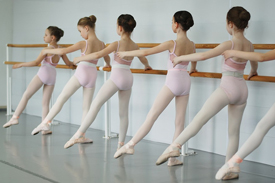 Ballet can be both a nemesis and a go-to for dancers. No matter what your opinion of ballet, it is an integral part of dance, both in terms of history and current technique. Many young dancers begin with ballet classes when they are starting to learn to dance; some gradually drift away from ballet towards other dance styles, or away from dance altogether, however others develop this love for dance by excelling in the discipline further.
Ballet can be both a nemesis and a go-to for dancers. No matter what your opinion of ballet, it is an integral part of dance, both in terms of history and current technique. Many young dancers begin with ballet classes when they are starting to learn to dance; some gradually drift away from ballet towards other dance styles, or away from dance altogether, however others develop this love for dance by excelling in the discipline further.
As dancers age and mature, ballet means that you have a better understanding of your body. Ballet encourages this due to its particular use of the body, and promotes learning about both anatomy and strengths and weaknesses as a dancer. Ballet also promotes posture and grace, even if you no longer dance. Dancers tend to have an innate sense of rhythm, which comes hand in hand with musicality. A good background in ballet will help you to better understand elements of music such as rhythm, structure and music quality, and how to use them to enhance your dancing in any style.
Perhaps one of the most important elements of ballet is the fact it gives you excellent grounding in technique. Ballet forms the basis of other dance styles too, particularly jazz, lyrical and contemporary. While dancers can still be successful in these techniques, having training in ballet first and foremost gives a greater quality and understanding of the movement, and added technical security. The difference in the dance techniques consequently comes from the quality and the stylistic elements. Ballet therefore enhances your training in other dance styles. Dancers who are classically trained always stand out as looking polished, with clean technique, especially in auditions.
